Steve Kovach April 18, 2017 at 08:00AM
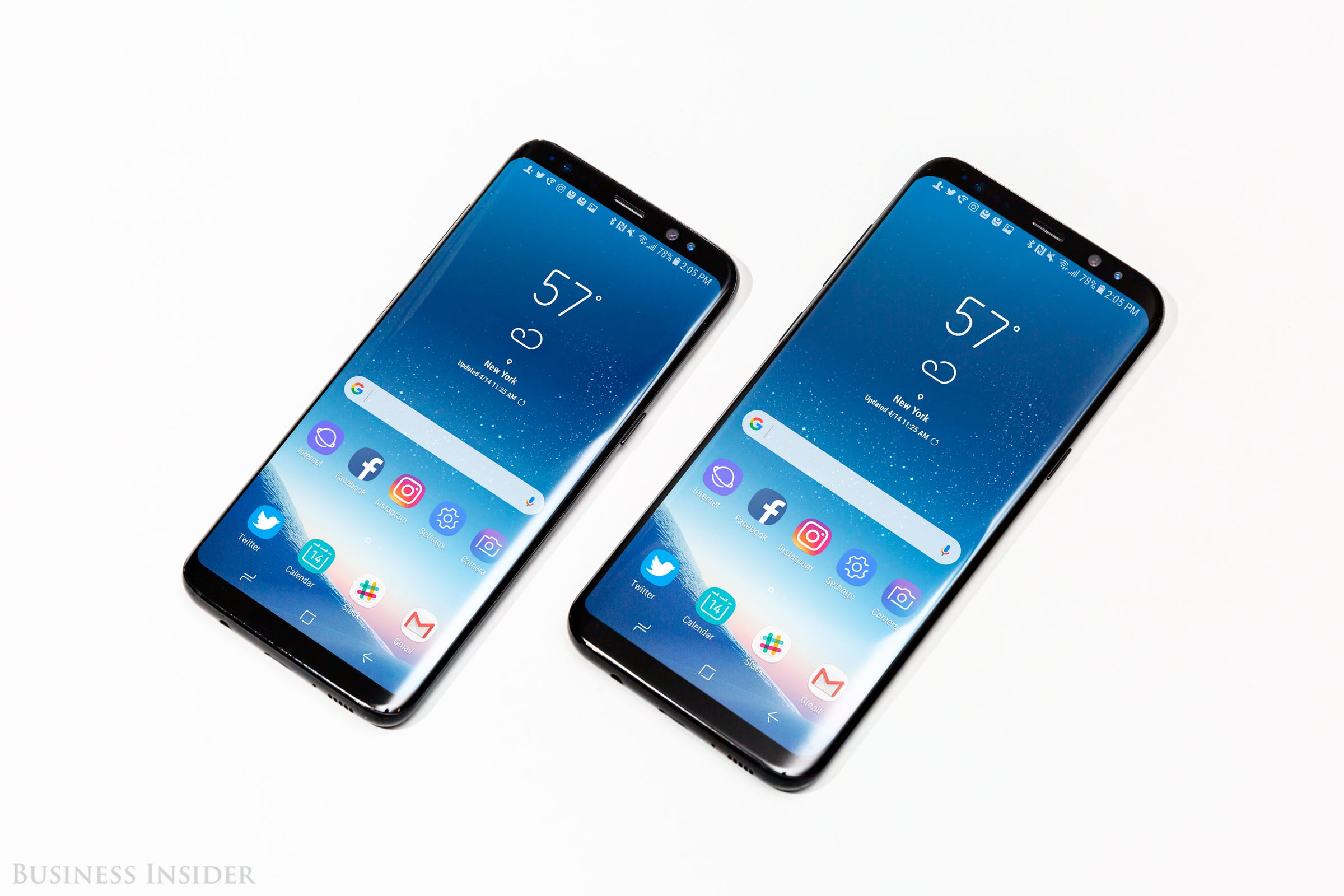
It’s the first question on your mind, so I’ll answer it right away.
The Galaxy S8 does not explode.
I’ve been testing Samsung’s latest phone for a week, and it never overheated. There was no popping, sizzling, smoking, and definitely no fire. As far as I can tell, the Galaxy S8 doesn’t have the same battery flaw that its predecessor did.
Of course, it’s always possible there will be problems once millions of people get the Galaxy S8 in the coming weeks. But you have to trust that a company as maniacally focused on winning as Samsung won’t make the same mistake twice in six months.
On top of that, the Galaxy S8 is an incredible phone, and it puts Samsung on a path to redemption after that embarrassing blunder with the Note 7 last fall. It’s bigger and better looking than the iPhone. The curved screen sets a new standard for smartphone displays. And it’s packed with essential features like wireless charging and a best-in-class camera.
Still, it’s not perfect. While the hardware and design are the best you can get, there are a lot of questionable things going on with the software, especially Samsung’s decision to make its own digital assistant called Bixby. Oh, and Bixby’s voice features won’t be ready when the phone launches.
The Galaxy S8 and its bigger brother the Galaxy S8+ go on sale April 21, starting at about $729.
The best-looking phone, ever
The Galaxy S8 isn’t just a gorgeous Samsung phone. It’s the best-looking phone ever built.
Most of that is due to the curved display, which covers over 80% of the phone’s face. The curve is supposed to give the impression that there aren’t any borders around the screen, which Samsung calls the Infinity Display. (That’s a misnomer though. You can totally see bezels on this thing.)
It’s an impressive feat of engineering. At 5.8 inches, the Galaxy S8’s screen is larger than the iPhone 7 Plus screen, but packed on a slimmer and more attractive body. The iPhone looks chunky and outdated by comparison. We’re getting closer and closer to the dream of having a phone that’s all display on the front.
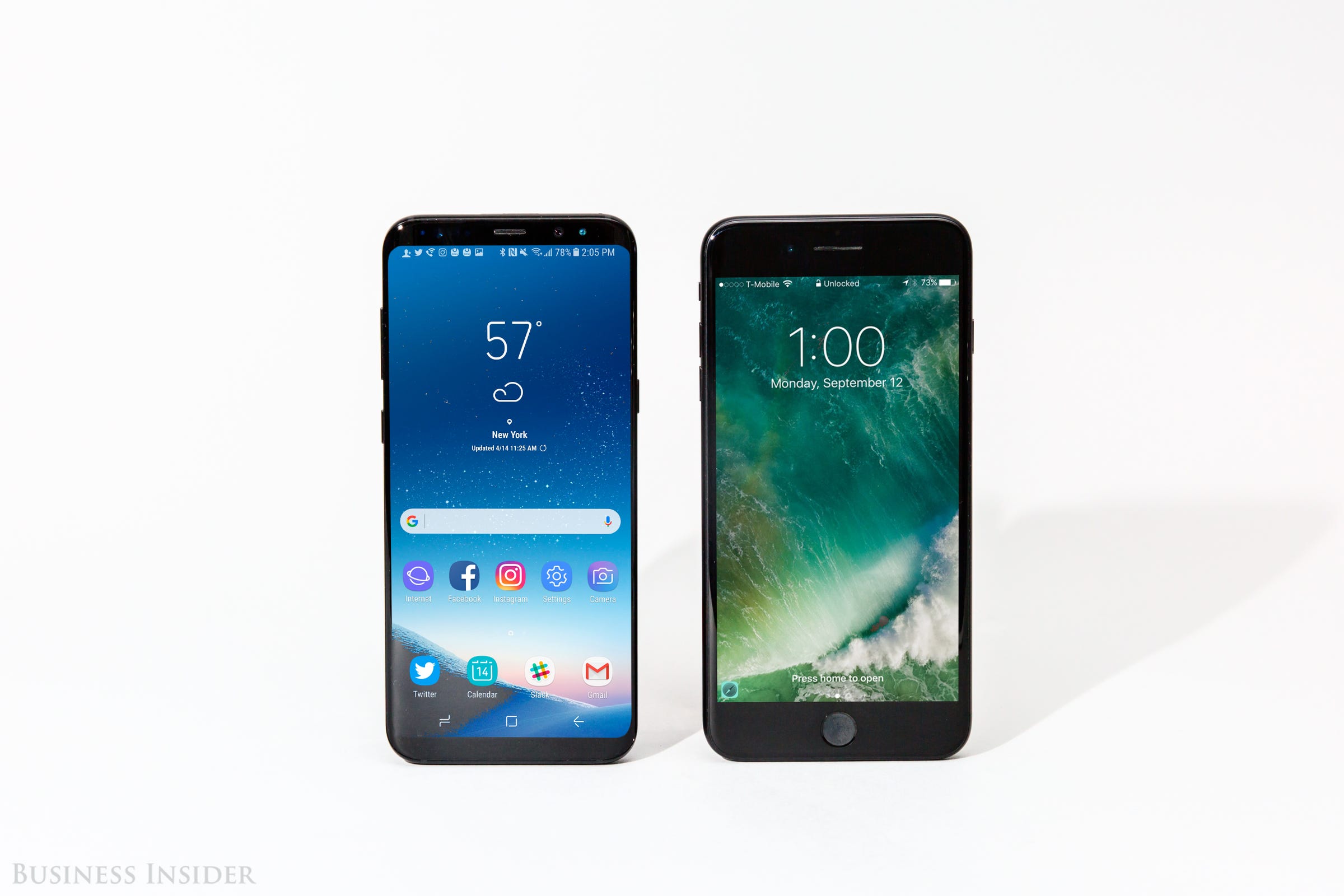
Want to go bigger? The Galaxy S8+ bumps the screen size to 6.2 inches, but I found that model a little too big for my tastes.
There’s another reason the S8 looks and feels so good. It’s made from two identical pieces of glass on the front and back, which makes it comfortable and natural to hold or slip in your pocket. Couple that with the large display, and it feels like your content is almost floating in your hand. Brilliant.
To make room for all that screen, Samsung removed the home button and replaced it with digital keys at the bottom of the display. There’s a nice haptic feedback when you press there, and it wasn’t much of an adjustment for me.
There’s more to like. Wireless charging. Fast charging. A camera that still can’t be beat. Expandable memory. And better-than-average battery life. It’s all the stuff you care about on one amazing-looking phone.
But there is one major flaw to the design. Since the home button is gone, the fingerprint sensor has been moved to the back, right next to the camera. It couldn’t be in a more awkward place. I constantly found myself fumbling for the sensor, which resulted in smudges on the camera lens. It would’ve been much better if Samsung put the fingerprint sensor in the middle of the phone.
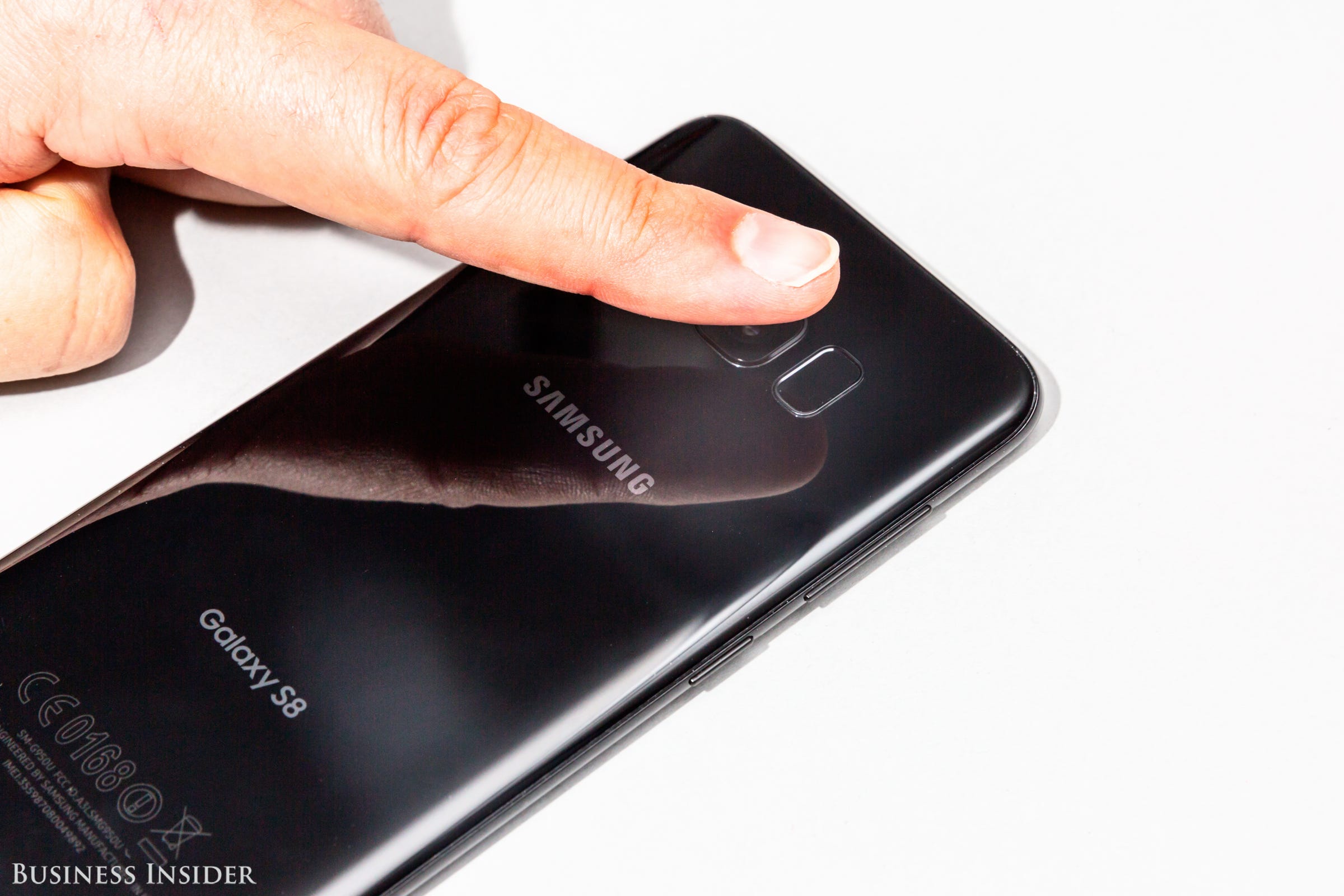
Software flubs
My big problem with the Galaxy S8 is the same problem I’ve had with the last few Samsung phones. Although Samsung continues to perfect hardware and design, it still misfires when it comes to software. Samsung’s modifications to Android are too noisy compared to the “clean” version that ships on Google’s Pixel phones.
And things get even more complicated with the introduction of Bixby, a new Siri/Alexa/Google Assistant rival developed in house by Samsung. Samsung’s ultimate vision for Bixby is to control everything on your phone with your voice. Want to adjust the brightness? Ask Bixby. Want to send an email? Connect to a Bluetooth speaker? Beam video to your smart TV? Bixby, in theory, should be able to handle all of it.
But after a disappointing demo of an early version of Bixby, Samsung delayed the voice control features until a software update comes later this spring. Bixby was clearly too limited and flawed to make a public debut. That’s nothing short of an embarrassment, considering Samsung hyped Bixby before it even announced the Galaxy S8 and added a dedicated button for launching the assistant on the side of the phone. Now that button does nothing.
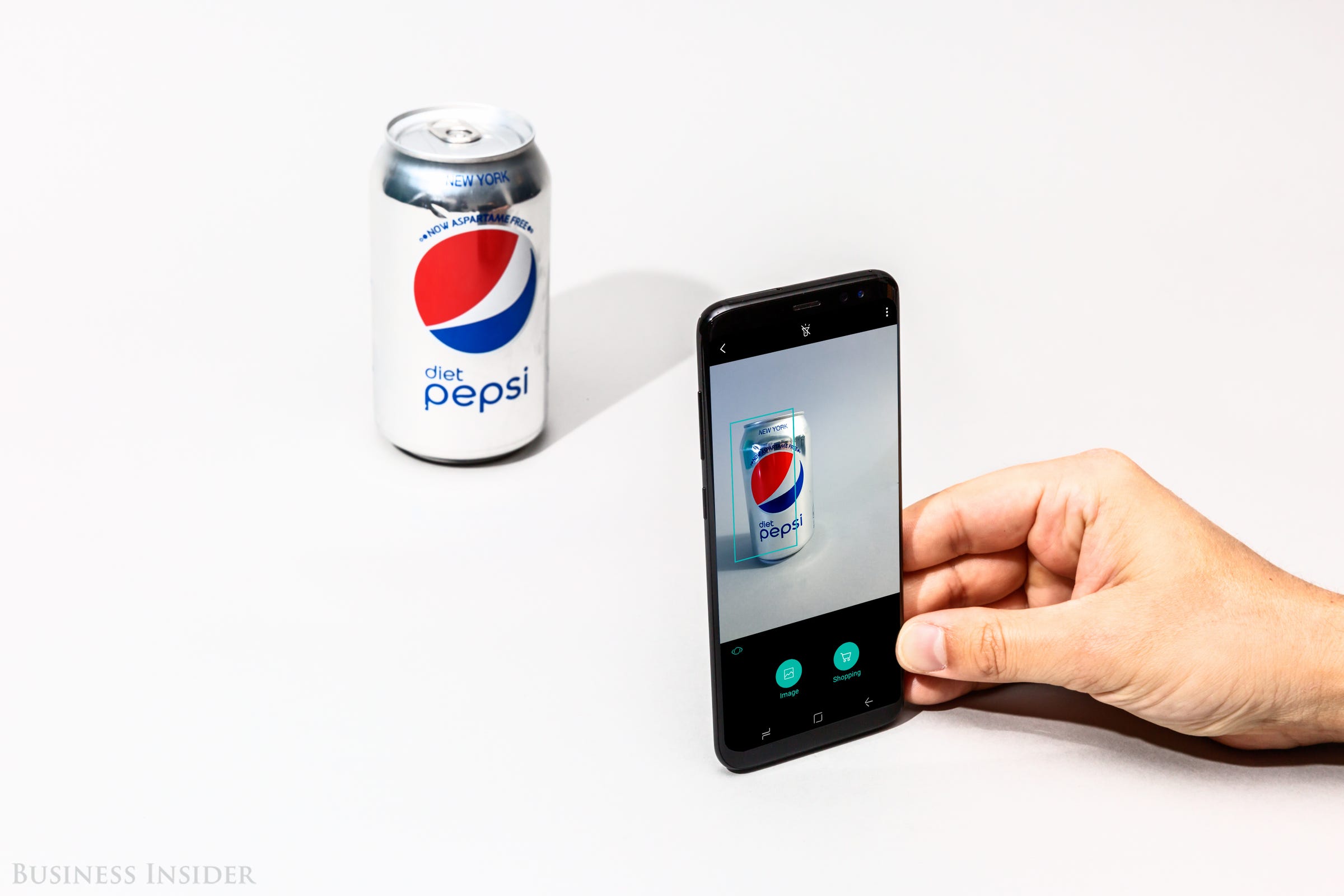
Bixby isn’t just about voice, though. There’s also a feature in the camera called Bixby Vision that can analyze objects and bring up relevant information like shopping links and things to do nearby. But I had mixed results with Bixby Vision. It was good at recognizing books and pulling up Amazon links, but it didn’t always recognize other objects. For example, I took a photo of a Pepsi can and Bixby pulled up images of beer cans instead. I’m not sure it’s a necessary feature anyway. I’d rather just Google things than point a camera at something in the real world to do a web search.
Finally, there’s Bixby Home, which lives to the left of your main home screen and contains cards of information like weather, upcoming calendar events, and news clips. It’s almost an exact clone of Google Home, which is also part of Android and works a lot better.
Overall, Bixby is a mystery to me. There’s no reason to add a proprietary, inferior digital assistant when Google already has it nailed. And I worry that some users will get confused by two assistants battling it out for your time on the same device. Although Bixby doesn't ruin the S8, you’re better off ignoring it and using Google’s services instead.
Security snafu
One of the newest ways Samsung is pitching to unlock your phone is also one of the least secure: facial recognition. Although it works every time and it’s faster than the fingerprint, it’s not as secure as it should be. In fact, someone was already able to fool it with a photo, and the S8 even warns you that it’s not foolproof when you activate it. However, Samsung tells me it has since improved the facial recognition feature with new software. That seems true. I wasn’t able to fool it with a 8x10 photo of myself no matter how hard I tried.
And Samsung says facial recognition was never meant to be totally secure. It’s just another way to “open” your device, like the standard swipe-to-unlock feature. But that’s not the way Samsung has been pitching it. In fact, it’s the first option to “protect your phone” when you set the device up for the first time. This is nothing short of a security blunder. You shouldn’t use the facial recognition feature and Samsung should remove it altogether.
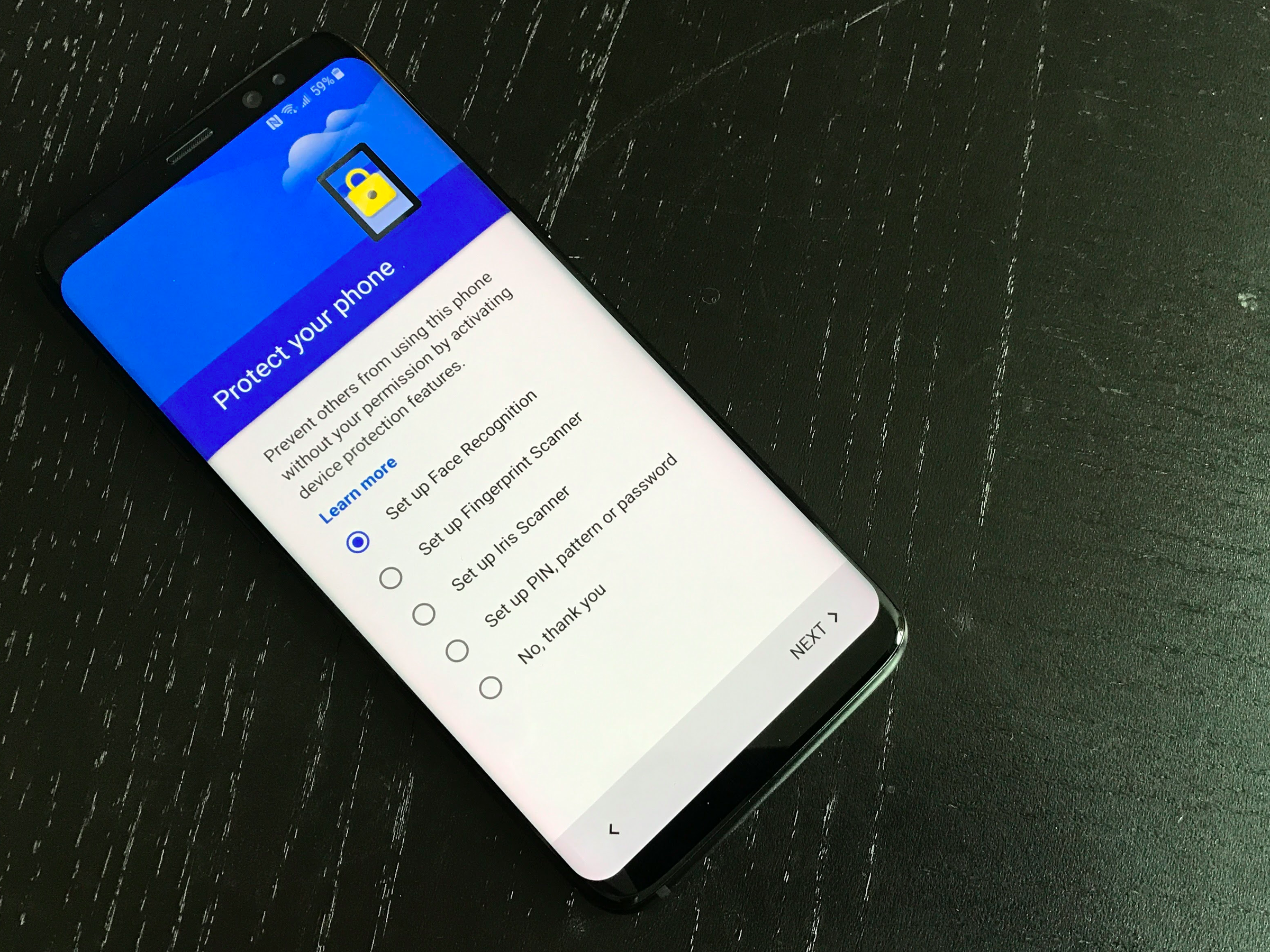
Conclusion
The Galaxy S8 is the kind of phone I’ve been dreaming of: a massive screen on a compact, well-designed body. It’s about as close to perfect as you can get. But because the software isn’t as refined as the hardware, I found myself pining for a phone like this either running the clean version of Android or even iOS. (My dream may come true with the next iPhone, according to the latest rumors.)
I have a feeling the software quirks I mentioned won't bother most people. And those quirks can easily be hidden or ignored. The Galaxy S8 is a great phone and it sets a new standard for all premium smartphones.
SEE ALSO: All the best features in the Galaxy S8
Join the conversation about this story »
NOW WATCH: Everything you need to know about the Samsung Galaxy S8
Samsung's Galaxy S8 is the most beautiful phone in the world from Business Insider: Steve Kovach








 Google also says it is improving the guidelines its human workers use to evaluate content that appears in search results. That work is also supposed to help train Google's algorithms to keep fake news, hoaxes, conspiracy theories, etc. out of your feed.
Google also says it is improving the guidelines its human workers use to evaluate content that appears in search results. That work is also supposed to help train Google's algorithms to keep fake news, hoaxes, conspiracy theories, etc. out of your feed.


